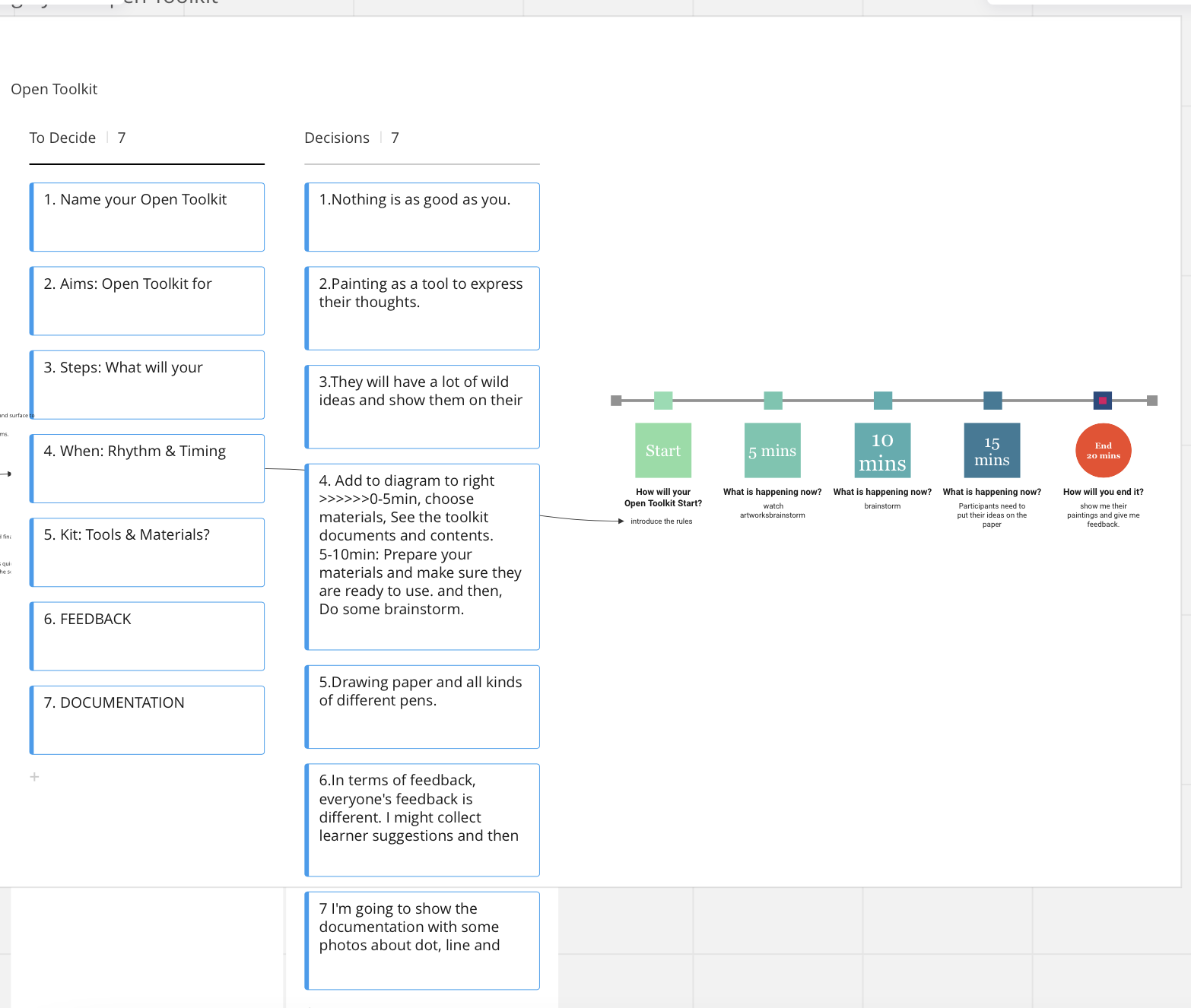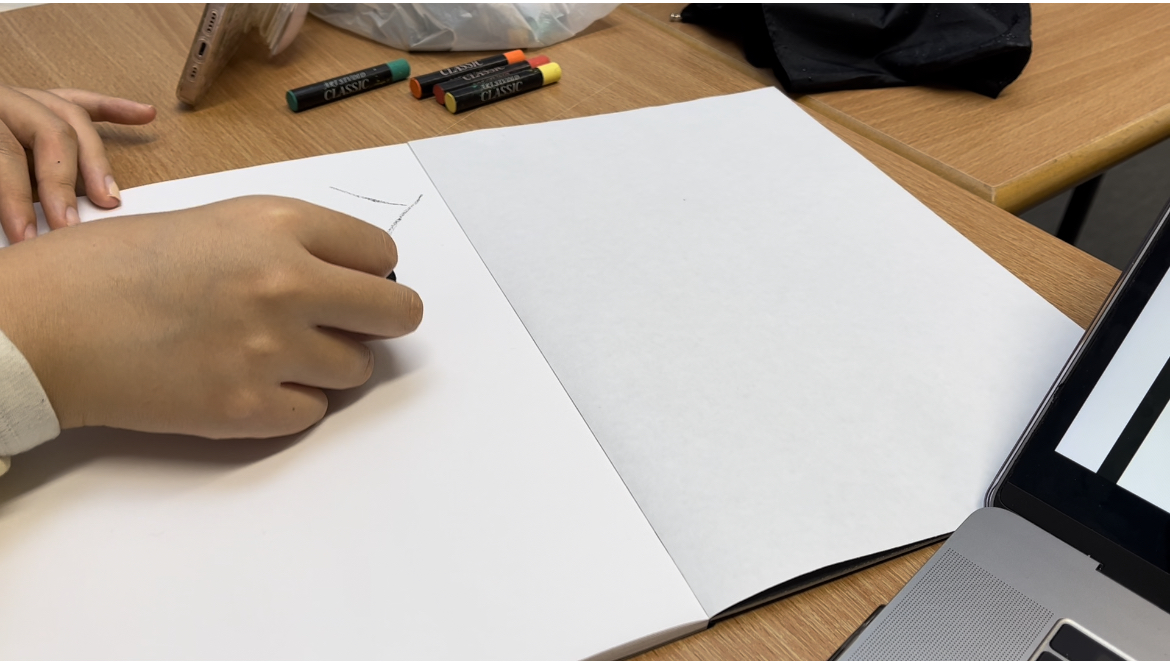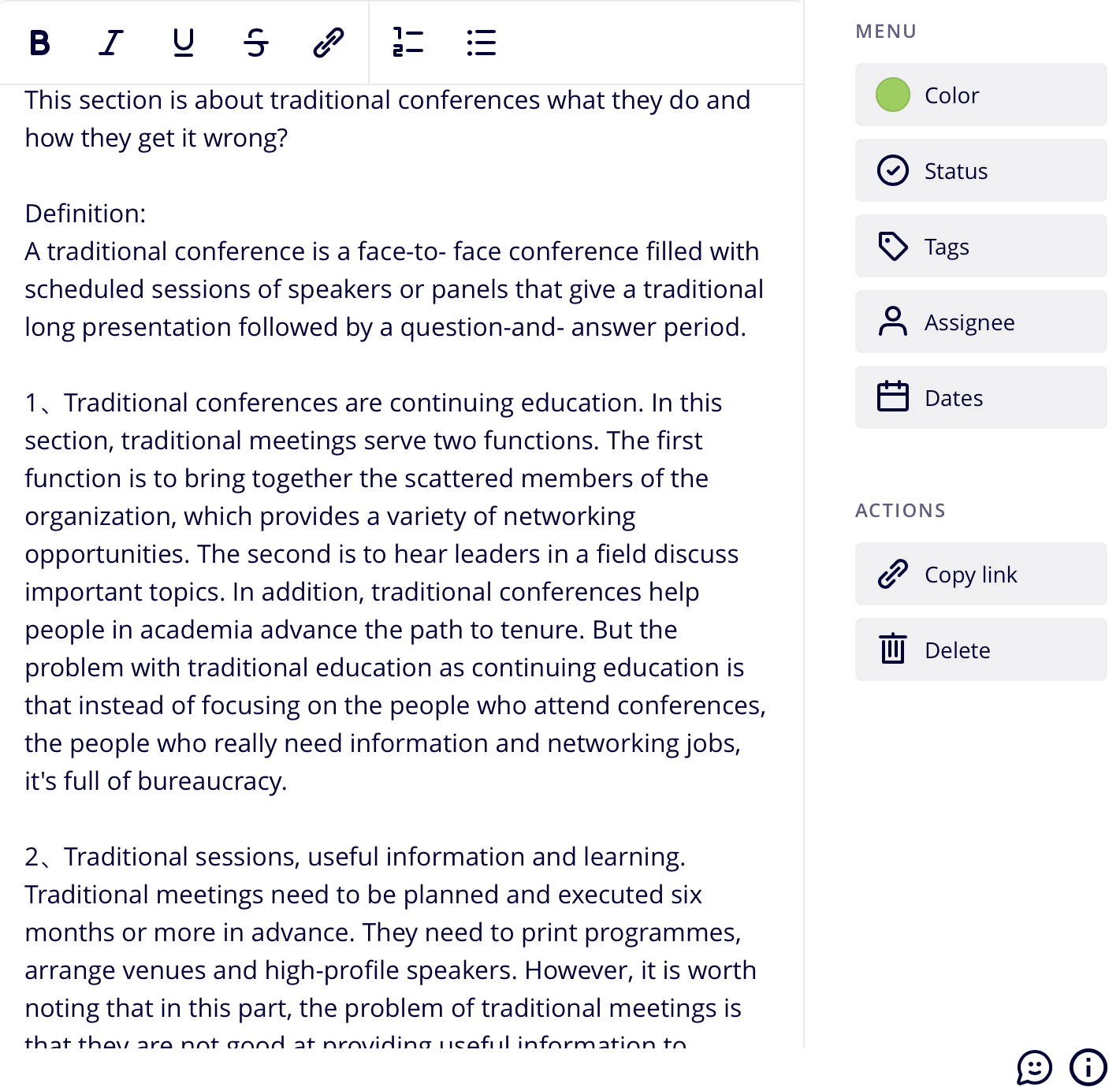This blog will discuss my Toolkit, which is called Nothing is as good as you. Both this kit and the first one are about drawing, but the expressions are different. This toolkit is abstract in nature, because participants can use dots, lines and surfaces to express whatever they want, such as emotions. The first toolkit was specific, down to the yellow apple as the subject matter.
As for why I wanted to update my toolkit, it was because I thought of the limitation that although apples are one of the better objects to draw, not everyone necessarily likes apples, and not everyone likes yellow. I remember when I was learning to paint, there was a time when I particularly liked adding ambient colors to ochre to emphasize the darker parts of objects, but my teacher at the time didn’t like that style and he was disgusted by the color of ochre. Therefore, he kept telling me that I needed to change my painting style and that I needed to learn from Morandi. However, changing my painting preferences was difficult for me at that time. To be honest, until now, I don’t know how to reflect Morandi’s style. More unfortunately, I forgot my original painting style and I became afraid of the brush, so I stayed away from painting. I always think there are right and wrong answers to math problems, but I don’t think there are right and wrong answers to anything related to art. So that’s why the altered kit allows the participants to use the tools I provide to express their feelings freely, and of course, the participants can use the tools they bring to express their ideas.(Figure 1-3 toolkit on Miro)

Figure1: Updated in the learner section on Miro

Figure 2 Updated in the timeline section on Miro

Figure3: Updated decoding the Open Toolkit section on Miro
Regarding the timeline of the toolkit, in the first five minutes I will introduce the rules of my toolkit’s game and show participants some masterpieces about dots, lines and surfaces. For example, I will show them Vincent van Gogh’s The Starry Night. I reckon that Vincent van Gogh is a famous Impressionist painter who is good at using points, lines and surfaces in his paintings.
It can be clearly seen in this video that most of Van Gogh’s brushstrokes are in the shape of dots and lines. When depicting stars, the short lines (dots) make the stars dynamic. When depicting cypress trees, lines are used to connect the cypress trees with the sky and the ground. After seeing Van Gogh’s The Starry Night, I also play a lot of works by artists, such as Edward Munch. After watching a series of artists’ works, I will show a painting video about points, lines and surfaces. The end result of the video is very different from what the artist has done, but the video is also a good entry point for participants to learn about points, lines and surfaces.
Five to ten minutes is the time for brainstorming. “Brainstorming is a free combination of art and ideas, rather than a cookie-cutter approach to curriculum that has become all too common in our test-oriented age.” (Walling, 2006) Participants need to combine their ideas with dots, lines and surfaces. From ten to fifteen minutes, they needed to draw their ideas on paper with crayons or other pens.Brainstorming is an important step in making the painting process smooth. With the basic idea, the painter can present the idea as he or she has conceived it. In the last five minutes, they needed to show me their drawing and, if they wanted, they could tell me what the drawing expressed. In addition, they could give me Toolkit feedback if they wanted.
I think the bottleneck of this Toolkit is creativity. First, this is because the Toolkit has no limits on what people want to express. Not having any restrictions can be confusing for participants. They do not know what to express. On this issue, I think they can extend the brainstorming time, and only if they are clear about what they want to express, the picture will manifest as it is in their mind. Meanwhile, if participants feel that expressing their feelings is a personal thing, they can start with their surroundings, such as drawing tables with dots, lines and surfaces. Secondly, participants may feel pressure to draw after seeing the artist’s work, but there is really no need to worry about it, just feel free and do not let anyone or anything influence you. The work is just a painting that reflects the three elements. So, the only rule of my Toolkit is one thing, express yourself. Nothing is more important than yourself, just be yourself.
Finally for this week’s group contribution, first of all, I created an online conference link and invited our mentor Jake to join us. (Figure4)Secondly, in the offline operation this Thursday, I participated in the operation of other team members’ toolkits and ran my own. (Figure5-7)Finally, I shared the first chapter I was assigned to read before class in class and shared it in my Miro.(Figure8 )
 Figure4: Meeting Screenshot
Figure4: Meeting Screenshot
 Figure5: Brainstorming steps for running the toolkit in a group
Figure5: Brainstorming steps for running the toolkit in a group
 Figure6: Participant drawing process
Figure6: Participant drawing process
 Figure7: The participant’s screen effect
Figure7: The participant’s screen effect

Figure8: Chapter Reading
Thanks for reading.
Reference list
Walling, D.R. (2006). Brainstorming Themes That Connect Art and Ideas Across the Curriculum. Art Education, 59(1), pp.18–24. doi:10.1080/00043125.2006.11651574.


Ruxue Li
3rd December 2022 — 5:52 pm
This article by Jiahui presents a very interesting toolkit that includes not only the participants’ own experiences but also their feedback, which gives a good idea of the effectiveness of the toolkit
s2413068
11th December 2022 — 9:56 pm
The blog shows your update of the toolkit, and you point out some limitations that could have uncertainty emphasize before. You clearly present the answer to the set goal and the verification of the research, All of the work was laid out well-organized structure. However, most of the article is a description of your working process, maybe you can show more critical thinking next time. I love your picture and the serious diagram inserted in this blog.